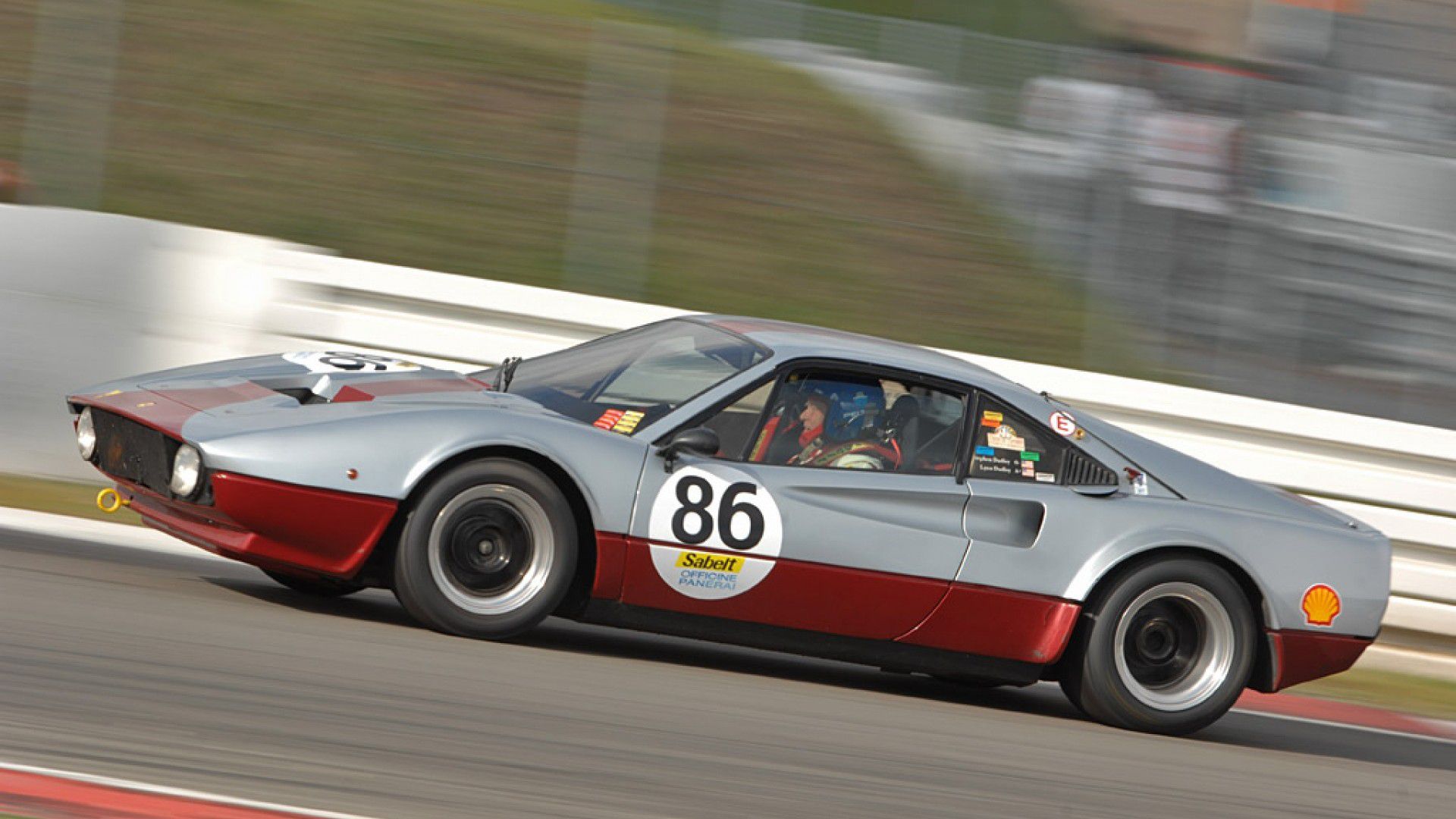Ferrari 308 GTB (GRP)
The 308 was a 2-seater sports car built by Ferrari from 1975 to 1985 in two versions, the GTB and GTS.
Like the similar 208 and 328, had mid-engine and rear wheel drive. The 308 was replaced by the 328 in 1985.
The version GTB (“Gran Turismo Berlinetta”) of 308, designed by Pininfarina was presented at the Paris Motor Show in 1975 as an appendix of the little loved by the public Dino GT4 4-seater Bertone, and the replacement for the Dino 246. Was designed by Leonardo Fioravanti, who was the designer responsible for many famous and celebrated Ferrari, like the Daytona 365, the Dino, the Berlinetta Boxer Ferrari 288 GTO and Ferrari 348. 308 The design was inspired by the forms that were at odds with the profiles of the angular GT4. The 308 GTB and GTS was a two-seater with a range of radical and aggressive curves, and became the most distinguished of Ferrari road.
The 308 GTS Targa car was launched in 1977 and was famous for being used in the television series Magnum, PI Were used in several copies, one for each new series, and many of these were put to Auction after being used. The first was a sample of 1979 had chassis number 28251.
From 1975 to 1977 the building was fiberglass, while 1977-1985 was steel. The first was manufactured by Carrozzeria Scaglietti, and had a fairly light weight, more precisely of 1050kg. The 308 was manufactured from this material up to June 1977, when it was built in steel. Quest Last weighed 150kg more than the first.
The mechanically similar GT4 shared much with the Dino 246 and 308 with the same. All were based on the same tubular frame, on the same platform and suspension independent double wishbone on all four wheels. The V8 engine with a cubic capacity of 3 L was double overhead camshaft with four Weber carburetors type 40DCNF. The European version produced an almighty power of 255hp SAE (229hp DIN) at 7700 rpm, while the American gave only 240hp SAE at 6600 rpm. This difference was due to the presence of devices for the control of emissions in the U.S. version. Then the engine was marketed a version with fuel injection ( GTBi/GTSi) And multi-valve, ie, 4 valves per cylinder ( QV).
For the first versions of the GTB fiberglass was dry sump lubrication, based on service experience Ferrari racing. Later versions were fitted instead of an engine with wet sump lubrication. The GTB retained the dry sump lubrication until 1981. Transmission was a five-speed synchromesh gearbox. The tank had a capacity of 74 L.
The 308 are among the most common historic Ferraris, with over 12,000 units produced. But only about 750 models (unfortunately you do not know the exact figure could be 712, 808 or 812) were constructed of fiberglass with dry sump lubrication, so that cars are among the most sought after by collectors.
The 308 are now considered positively by Ferrari and critics. In 2004, Sports Car International magazine has chosen this car in fifth place of the best sports cars of the seventies.
Accelerating from 0-100km/h in 6.5 seconds, and 100-200km/h in 17.8 secondsTop speed was 256km/h.
A system of injection Bosch K-Jetronic was launched in 1980. 308 The new models were called GTBi and GTSi, the power was reduced by 15hp to 229hp DIN 214 DINhp at 6600 rpm, as a result there was a reduction of harmful emissions. Two years later came the multi-valve, 4-valve per cylinder, called Quattrovalvole with a further increase in power to 240hp DIN at 7000 rpm/min.
The 288 GTO, also referred to as the first super-car of Ferrari, derived in many respects from the 308 GTB. Indeed, it was moved by similar V8 engine dealesato (ie with reduced cylinder diameter) of 308. Was now a displacement of 2.8 L, but with turbocharging. It was kept the general design of the car with extended wheel arches and the same tubular chassis, but were modified intakes Side air was enlarged and the spoiler.
In addition to differences between one generation and’s Other 308 models were variations between specimens of the same number of employees from their market Export. For example, the 308 destined for the American market had larger bumpers and a slightly more robust frame (and other smaller details) and engine modifications to meet the most stringent safety codes on U.S. roads.
The cars sold in the U.S. market had more constraints with respect to emissions leading to a reduction of power, which then consisted simply of a retard timing and adoption of an exhaust pollution.
In 1982 Michelotto Automobili created several examples of the 308 GTB suited to compete in competitive rallies. The most important victory came at the Tour de France Auto, won by the team car headed Ferrari importer Charles Pozzi.
In 1980-91 Charles Facetti and Martin Finotto, associates in “Carma” built a car “Group 5” when the engine is fitted with two “turbo”. The car participated in various endurance races in 1981, achieving the fastest lap in the race at the 24 Hours of Daytona.
159
